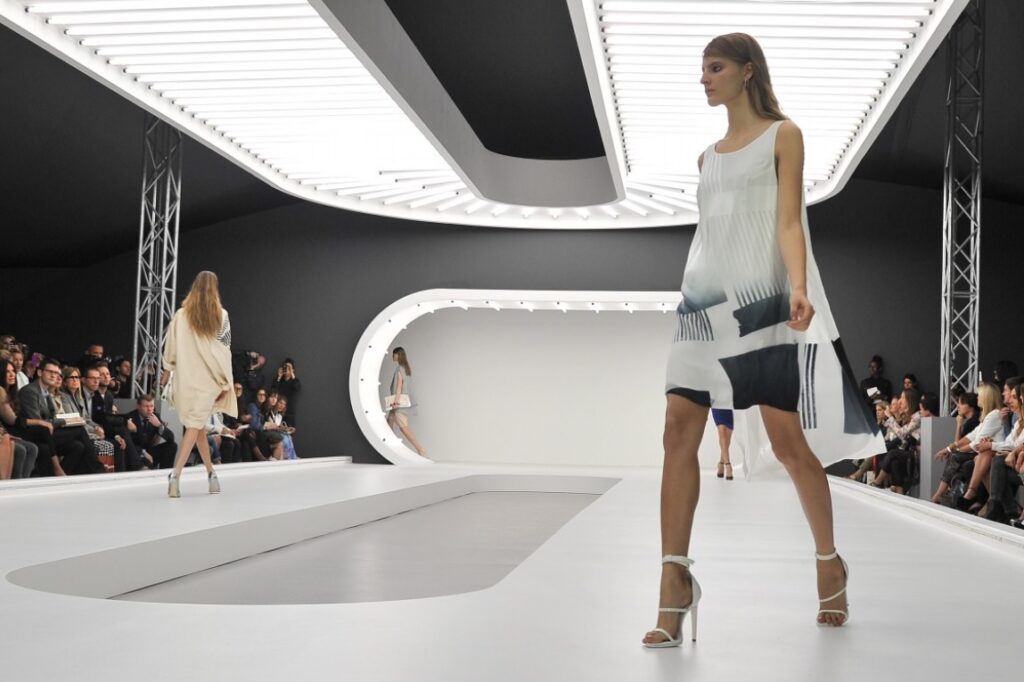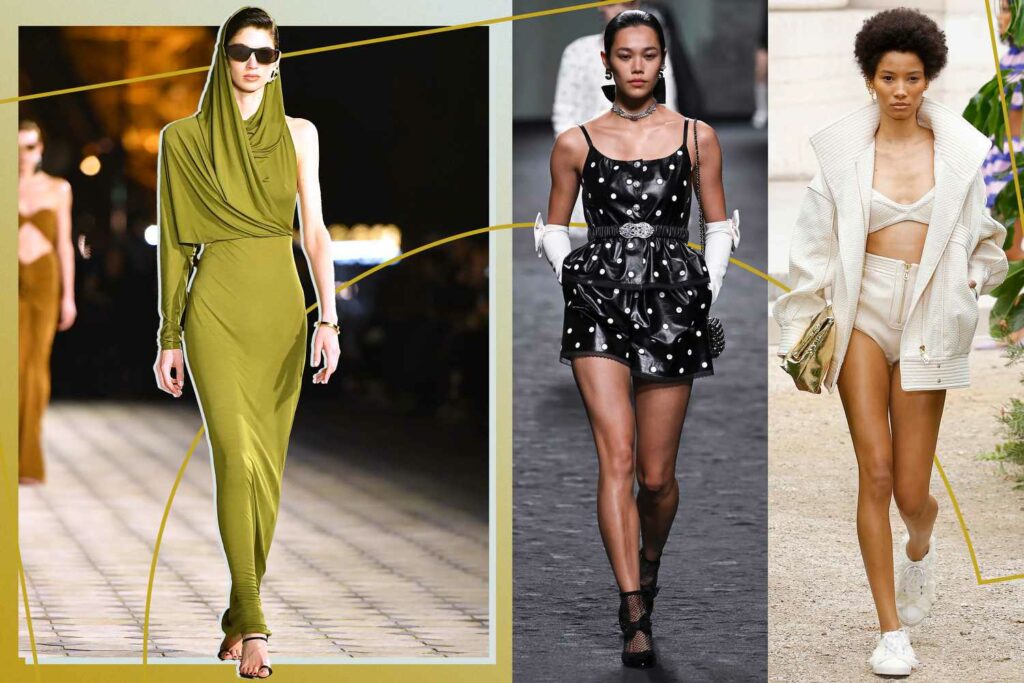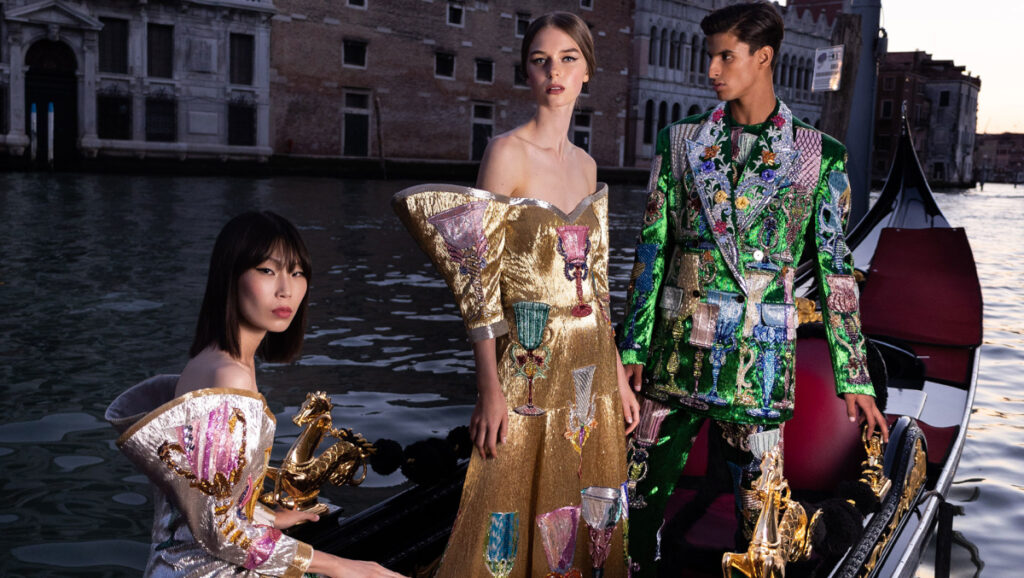Introduction
The world of fashion has always thrived on spectacle, and the introduction of virtual fashion shows has taken this spectacle to a whole new level.
The Rise of Virtual Fashion Shows
In recent years, virtual fashion shows have gained significant traction. Fashion houses, big and small, are opting for digital platforms to showcase their latest collections. This shift was expedited by the global pandemic, which forced the fashion industry to rethink its approach to presenting new designs.
Embracing Digital Transformation
Virtual fashion shows emerged as a response to the limitations of traditional runway events. Designers recognized the potential of digital platforms to reach a global audience without the constraints of venue capacity and geographical boundaries. This shift allowed designers to showcase their collections to a much wider audience, transcending the barriers that were once inherent to physical fashion shows.
Breaking Traditional Norms
The rise of virtual fashion shows also challenged traditional norms of the industry. The need to host live events in exclusive venues was replaced by the accessibility of online platforms. This democratization of fashion allowed emerging designers to compete on a more level playing field with established names, as the emphasis shifted from the extravagance of physical events to the innovation and creativity of the presentations themselves.
Creative Freedom and Flexibility
Virtual fashion shows offered designers unprecedented creative freedom and flexibility. The digital realm allowed for experimentation with presentation formats, allowing designers to incorporate multimedia elements, interactive features, and storytelling techniques that would be challenging to execute on a physical runway. This new medium opened the door to explore unique narratives that could enhance the audience’s connection with the collections.
Beyond Borders
Geographical limitations were a persistent obstacle in the fashion industry. Virtual fashion shows eliminated this barrier, enabling designers to showcase their work to a global audience simultaneously. Viewers from different corners of the world could witness the unveiling of collections in real-time, fostering a sense of inclusivity and shared experience that transcended borders.
A Platform for Innovation
The rise of virtual fashion shows also spurred technological innovation within the fashion industry. Designers and tech experts collaborated to integrate cutting-edge technologies such as augmented reality (AR), virtual reality (VR), and 3D simulations into the presentations. These technologies not only elevated the visual and interactive aspects of the shows but also provided an immersive experience that brought the audience closer to the essence of the collections.
Adapting to Change
While the fashion industry has a rich history deeply rooted in tradition, it has also shown remarkable adaptability to change. The rapid adoption of virtual fashion shows underscored the industry’s resilience and willingness to embrace innovation. This adaptation also paved the way for discussions about the future of fashion events, igniting debates about whether virtual shows could coexist with, or even replace, traditional runway shows in the long term.
Benefits of Virtual Fashion Shows
Virtual fashion shows offer a myriad of benefits, from increased accessibility to a wider global audience to reduced environmental impact. Designers can now reach fashion enthusiasts across the globe without the limitations of physical venue capacities.
Challenges and Limitations
While virtual fashion shows bring innovation, they also present challenges. The absence of a tangible runway experience and the reliance on screens can diminish the sensory engagement that physical shows provide.
Technological Innovations
Cutting-edge technologies like augmented reality (AR) and virtual reality (VR) are becoming integral to virtual fashion shows, allowing audiences to experience the collections in immersive and interactive ways.
Engaging the Audience: Interactivity and Immersion
One of the key aspects of virtual fashion shows is the ability to engage the audience. Viewers can explore garments up close, rotate outfits, and even visualize how they would look when worn.
Sustainability and Accessibility
Virtual fashion shows align with the industry’s growing emphasis on sustainability. The reduction of physical infrastructure and travel contributes to a lower carbon footprint.
Fashion in the Metaverse
The metaverse presents a new realm for fashion to thrive. Virtual fashion could become an essential component of an individual’s digital identity.
Fashion and Digital Art Collaboration
Virtual fashion shows have opened doors for collaborations between fashion designers and digital artists, resulting in boundary-pushing, artistic presentations.
Inclusivity and Diversity
Virtual runways have the potential to break down barriers and promote inclusivity. They provide a platform for diverse voices to be heard and represented.
Behind the Scenes: Creating a Virtual Fashion Show
The process of crafting a virtual fashion show involves a fusion of creative direction, technology implementation, and storytelling.
Fashion Retail in the Digital Age
Virtual fashion shows are transforming the retail experience. Consumers can now make purchases directly from the runway, blurring the line between presentation and commerce.
The Future of Digital Runways
As technology continues to evolve, so will virtual fashion shows. The future might hold even more immersive and engaging experiences for audiences.
Impact on Traditional Runway Shows
The rise of virtual fashion shows does not necessarily signal the end of traditional runway events. Both formats can coexist, catering to different preferences and objectives.
Conclusion
The evolution of virtual fashion shows marks a pivotal moment in the fashion industry’s history. With technology as its driving force, fashion has entered a new era of creativity, accessibility, and interactivity.
FAQs
What exactly is a virtual fashion show?
A virtual fashion show is an online presentation of fashion collections, often using digital technology like AR and VR, allowing viewers to experience garments virtually.
How do virtual fashion shows benefit emerging designers?
Virtual fashion shows provide emerging designers with a global platform to showcase their creations without the limitations of physical events, enabling broader recognition and opportunities.
Are virtual fashion shows more sustainable than physical runway events?
Yes, virtual fashion shows are generally more sustainable, as they reduce the need for physical infrastructure, travel, and other resource-intensive aspects of traditional shows.
Can virtual fashion shows replicate the excitement of a live event?
While virtual shows offer a unique and engaging experience, replicating the exact excitement of a live event remains a challenge due to the absence of a physical, communal atmosphere.
What role does technology play in the evolution of fashion?
Technology has revolutionized fashion by enabling virtual shows, interactive experiences, and collaborations between fashion and digital art, pushing the boundaries of creativity and engagement.




